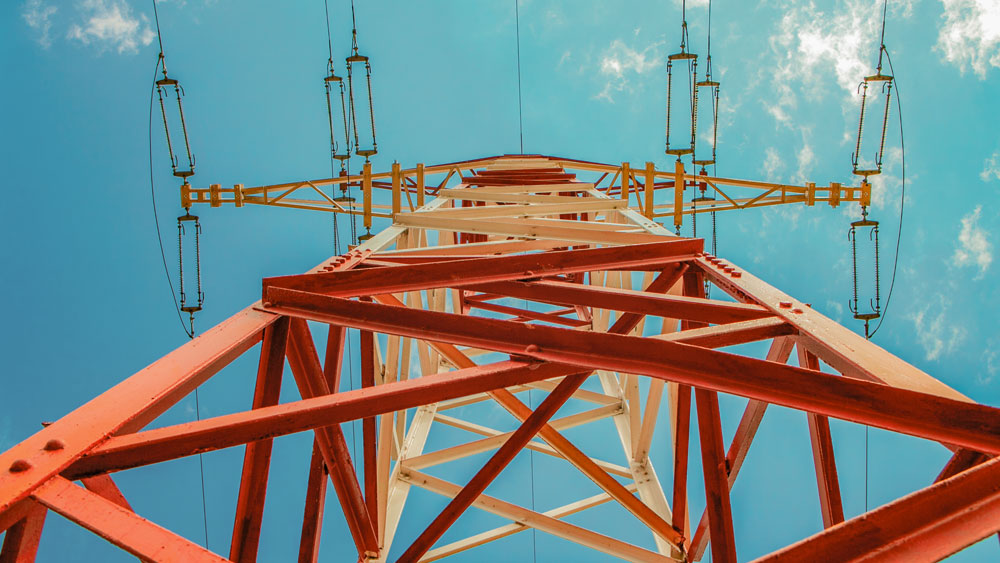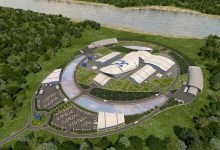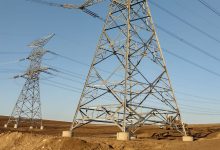Status of National Power System
2,500 MW Missing Inventory by 2027
In absence of appropriate investments, Romania risks not being able to ensure its energy demand within several years. The analyses conducted by the national power grid operator in Romania Transelectrica show that the system could witness missing production capacities of over 2,500 MW by 2027. This in conditions in which the commissioning of new units is continuously postponed and, on the other hand, a number of capacities will be withdrawn from operation in the following years.
The analysis recently conducted by Transelectrica, in terms of situation of the National Power System (NPS), reveals the extent of the disaster in which it is found after decades when investments were continuously postponed. The only certainty is the commissioning next year of the power plant build in Iernut by Romgaz. Otherwise, everything is in the project phase. In this situation is also the largest energy project, the construction of Unit 3 of Cernavoda nuclear power plant, which will probably be redesigned, given that signals have been launched on giving up the investment together with China General Nuclear Power Corporation.
CEO, the hot spot of the system
One of the hottest spots is that relating to the survival of the Oltenia Energy Complex (CEO), whose existence is vital for the national power system. Ensuring 25% of the national power production, CEO is facing major financial difficulties due to accelerated increase in the price of CO2 emission allowances. The option proposed by the Ministry of Energy is to introduce a subsidy allowing the company to purchase CO2 emission allowances for a while, thus giving it the respite needed to retire a number of groups operating based on coal and replace them with gas-fired groups.
Many projects, few achievements
The sensitivity analysis of the national power system, recently conducted by Transelectrica at the request of the National Regulatory Authority for Energy (ANRE), shows that for 2022 there will be a lack of production capacity in the National Power System in relation to the consumption demand of 1,799 MW and in 2022 the missing capacity will climb to 2,512 MW. The analysis points out that these values are at the limit of the import capacity of cross-border electricity transmission lines.
“Covering an important part of the net domestic consumption by import involves certain risks on the potential lack of regional resources in terms of power generation capacities, taking into account the annual balance of countries in the region, which, except for Bulgaria and the Czech Republic, are net importers (Hungary, Poland, Croatia, Serbia),” the analysis shows. It was carried out in a critical scenario, for a consumption peak during winter, excluding the capacities under repair and the unusable ones. The analysis also specifies that, although a number of projects have been announced, their materialization is delayed. The following are reminded in this context:
- Failure to build groups 3 and 4 in Cernavoda by 2027, according to the forecasts initially sent by Nuclearelectrica (initially the estimated commissioning was provided for 2023-2024);
- Failure to build the new gas-fired groups, estimated to be commissioned by 2022: in Arad (net power available of 38 MW), Govora (3 gas turbines with a total net available power of around 125 MW) and Bucharest (3 combined cycle power plants with a total net available power of 400 MW in Grozavesti, Bucuresti Sud and Progresul);
- Diminishing, until the complete disappearance, of the energy capacities in the portfolio of Oltenia Energy Complex, considered unusable as of 2022, considering the potential consequences of the evolution of the price of CO2 allowances on the financial situation of Oltenia Energy Complex;
- Withdrawal of a capacity of around 180 MW at CET Govora starting with 2022 for financial reasons, but also because the power plant depends on the primary resource coming from Oltenia Energy Complex;
- The disappearance of the capacity installed at CET Drobeta due to the declaration of the bankruptcy of the Romanian Authority for Nuclear Activities (RAAN).
Subsidies for CEO, uncertain
Oltenia Energy Complex, which currently has a total installed capacity of 3,240 MW in lignite groups in Rovinari, Turceni, Isalnita and Craiova 2 power plants, would remain with only 2,295 MW in 2020. In turn, new gas-fired groups will appear, with a total installed capacity of 800 MW, which will start being commissioned as of 2024, when the first 200 MW are available, according to the adequacy analysis of the power system carried out by Transelectrica. These new gas-fired groups would be brought online at Turceni (300 MW as of 2026), Isalnita (300 MW as of 2026) and Craiova 2 (200 MW as of 2024) power plants. Reconversion of gas-fired production will lead to a reduction of total CO2 emissions of the entire complex from 0.91 tons of CO2/MWh in 2019 to 0.77 tons by 2030. Until these targets are reached, allowing the survival of the complex in the context where the environmental rules have been increasingly restrictive, the Government that has been recently dismissed by a motion of censure wants to grant a subsidy to the complex, for a period of 10 years, which would amount to a total of RON 10.5 billion. But without this support Oltenia Energy Complex goes bankrupt, the Government claims, which thus wants to force all consumers to pay a special tax, named adequacy tax. The impact at consumers will be RON 0.033/kWh in the first year, 2020, following to decrease gradually, to RON 0.002/kWh in 2030.
“Currently the regulated tariffs for household consumers are around RON 0.412/kWh, so the adequacy tax – CEO will increase these tariffs by 8% in 2020, 4.8% in 2021 and 4.3% in 2022,” according to the support scheme that would be negotiated with the European Commission. For now, it is uncertain whether Romania will send to Brussels this project, because the new Energy Minister, Virgil Popescu, has announced that he did not support the introduction of this subsidy. According to the support scheme, from this money CEO will pay annually part of the CO2 allowances, the modelling showing that, during the ten years, the complex will pay from its own sources 78.8 million allowances, and from subsidies the difference of 67.7 million. These figures were reached following the electricity production forecast of the complex for the following ten years. The evaluation of the support mechanism will be carried out annually, by ANRE, and the value of the aid or the period could decrease, depending on the energy capacity that appears on the Romanian market to replace CEO’s coal-fired power plants.
Without support, CEO risks bankruptcy
Government has prepared a mechanism to support Oltenia Energy Complex that will be negotiated with Brussels. According to the plan, for ten years all electricity consumers will pay up to RON 10.5 billion, to support the company, severely affected by the rising costs with the emission allowances it must buy to produce electricity. But without this support, Oltenia Energy Complex will go bankrupt, the Government claims, which wants to force all consumers to pay a special tax. In the explanatory statement accompanying the draft support scheme, it is specified that without the intervention of the Romanian state, Oltenia Energy Complex is unable to acquire the CO2 emission allowances for 2019 until April 30, 2020. Without complying with this condition, thereafter the company will enter into insolvency or even directly into bankruptcy, as:
– for the year 2019 the company can purchase from its own sources only 3,000,000 CO2 allowances out of the 12,200,000 CO2 allowances required, provided that the average price of CO2 allowances will be around EUR 27/CO2 allowance;
– the cash flow deficit estimated is around RON 1,200 million.
Major risk for the National Power System
The adequacy study conducted by Transelectrica to argue the support scheme for CEO took into account the option that the energy producer risks insolvency or even bankruptcy in 2020 because it cannot pay RON 1.6 billion on account of the emission allowances related to energy production for this year. Under these conditions, the conclusion was that Romania could not provide its consumption needs, even with imports to the maximum possible technical level, and prices would explode. In summary, the conclusions of the adequacy study were:
– from 2022, in conditions in which all groups from of Oltenia Energy Complex will stop, the National Power System will have a major problem of adequacy, which means that Romania will no longer have the resources necessary to cover the consumption of electricity, even with the maximum use of cross-border import capacity;
– keeping operational the capacities of Oltenia Energy Complex, until they can be replaced by new low emission production capacities, is a national security issue;
– covering an important part of the net domestic consumption through import involves certain risks related to the real availability of the energy that can be imported from the neighbouring electric power systems which operate synchronously;
– the existence of a 1,800 MW interconnection capacity does not guarantee the import from the neighbouring energy systems which operate synchronously, at the maximum capacity level; explicit annual and monthly allocation of interconnection capacities is performed by annual/monthly auctions organized by MAVIR (for interconnection capacity on the Romania – Hungary border) and Transelectrica (for the interconnection capacities on the Romania – Bulgaria border, respectively on the Romania – Serbia border), in which traders of electricity, usually non-resident legal entities in Romania, participate; the commercial activity of import-export of electricity of the traders is determined exclusively by their commercial interest;
– the price increase trend on the centralized markets for bilateral electricity contracts is determined by the increasing evolution of the prices registered on DAM, which are influenced by the deficit prices on the Balancing Market;
– in the conditions in which Oltenia Energy Complex will no longer work, probably on the Balancing Market the values of the indicators that establish the dominant position on the market, as well as the concentration of market power, will increase;
– by closing Oltenia Energy Complex, the National Power System will be dependent on the imports made by traders, and the prices on the different centralized markets for electricity could be influenced by the import-export activity, by the new rules on the offer prices on the Balancing Market where there is a participant with a dominant position, by the rules prepared and approved by ANRE regarding the creation of aggregate entities;
– the results of the simulations performed by OPCOM for the scenario in which Oltenia Energy Complex is stopped shows that the DAM price increases significantly both during the winter period and during the summer period within the limits of 40% -180%, the average value being 110%, compared to the reference situation;
– it can thus be estimated that if Oltenia Energy Complex were to stop its production capacities, compared to the current situation the price on DAM will increase by 100% and the price on CMBC-EA will increase by at least 70%;
– in the event of stopping the capacities of Oltenia Energy Complex, by increasing the electricity price by around 70%, the energy price would be around EUR 0.136/MWh, thus seriously affecting the national economy, through the risk of relocation of major processing industries (aluminium, steel etc.), with global marketplaces.
Oltenia Energy Complex is the second largest electricity producer of Romania, with an installed capacity of 3,240 MW in Rovinari, Turceni, Isalnita and Craiova 2 power plants.
Northern Transylvania, indicated for the development of new capacities
Also, at ANRE request, Transelectrica has conducted an analysis regarding the ratio between consumption demand and production capacities available at regional level. The purpose was to identify solutions for integrating distributed production and consumption demand in balancing the consumption/production balance, and the conclusion was that the area that delimits Northern Transylvania is the most suitable for developing new production capacities. Also, a number of new projects have been identified that reduce the transmission transits through the power distribution networks. These projects are:
- Distributie Energie Oltenia: a new substation of 400/110 kV in Caineni area, Valcea County, and its connection to Tantareni – Sibiu 400 kV OHL to evaluate power produced in the hydropower plant in Middle Olt area;
- SDEE Transilvania Nord: a new Bistrita 400/110 kV substation connected in Suceava – Gadalin 400 kV OHL or a substation in Dej area and its connection in entry-exit system in the existing Iernut-Baia Mare 220 kV OHL;
- SDEE Muntenia Nord: doubling the transformer/auto-transformer units in Teleajen, Stalpu, Focsani Vest, Filesti substations, where there is only one transformer unit, and its unavailability leads to increasing the power transit through the power distribution network and construction of a new substation in Liesti-Cudalbi area, to evacuate energy produced in CEE Gemenele, Cudalbi, Baleni.
As for ensuring the safety and continuity of supply in the metropolitan area of Bucharest, a study is underway on the development of the network from a 10-year perspective. It will be completed next year. For the moment, ensuring the supply of electricity to the metropolitan area of Bucharest at the level of the current requirements remains an unresolved problem.







